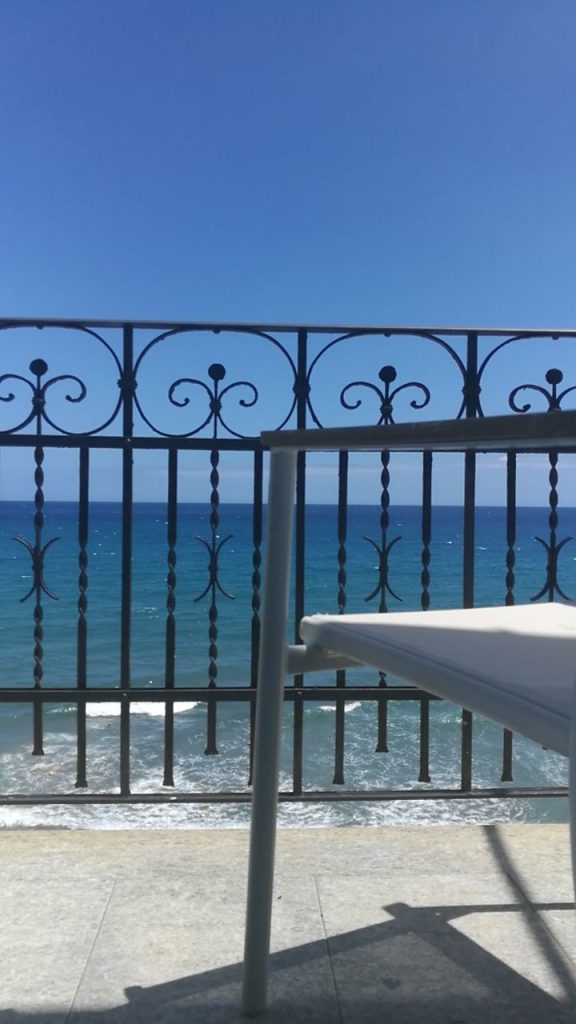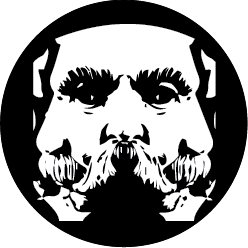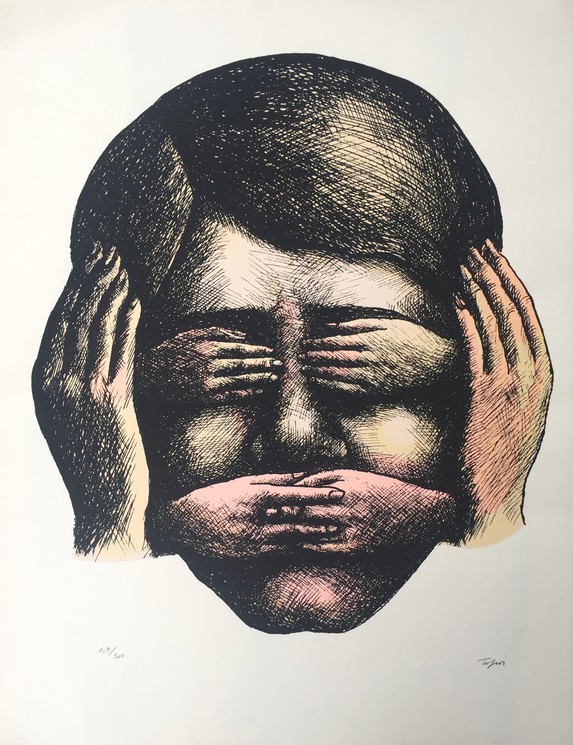Resilienza e aRTE
Intervento scritto per l’incontro organizzato dalla Biennale di Venezia/Architettura dalla Fondazione Dona’ in 26 giugno 2021.
Federico Bonelli (Fondazione Trasformatorio Amsterdam)
(ENGLISH TEXT BELOW)
La Resilienza dell’immaginario
Il sigillo si imprime nella cera. Pensiamo al sigillo. Non alla temperatura della stanza. Eppure se siamo alla mezzanotte del 20 dicembre a Thorndheim e la temperatura esterna e’ di -23 gradi celsius la cera potrebbe avere la consistenza del granito. Il sigillo non la scalfisce. L’immaginario, da solo non va abbastanza lontano, ha necessita’ della pratica.
Praticare l’immaginario e’ l’attività dell’artista, che esplora un paesaggio semantico fatto di possibile e lo incorpora nello spazio e nel tempo. Con il corpo dell’opera, dello spettatore e con il suo. Lo pratica. Lo vive. Ne disegna la stanza della “situazione”, una scatola sempre aperta, in cui e’ impossibile intrappolarci il quantico gatto…
Il sigillo e’ dei filosofi, la cera della storia. La stanza gelata dell’artista-alchimista, in cui un colore prende forme impossibili per l’intelletto. In cui uno Strindberg dipinge il proprio inferno mentre lo scrive. Milioni di volte in milioni di Stindberg, in milioni di inferni congelati, che siano o no “percepiti” da un editore, da una biennale o da un programma televisivo.
Trasformatorio e’ una fondazione che raccoglie esploratori di paesaggi interiori, di semantiche ibride, e di inferni e paradisi reali. Boschi, borghi, periferie, palazzi o sentieri, sogni o incubi, ai confini tra le province e le carte geografiche. Questi esploratori sembrano spesso incompatibili tra loro, evolvono da sensibilita’ differenti, anche in modo radicale eppure convivono, collaborano, producono. Il laboratorio li integra in modi impossibili e pericolosi… Artaus avrebbe detto crudeli, perche’ cercano il vero.
L’attivita’ del trasformatore e’ fondamentalmente quella di stabilire la situazione in cui si materializza l’incontro tra queste sensibilita’ crudeli e il mondo, perche’ la nostra arte (da artificio ma anche da atto) prenda la forma appropriata al mondo e non quella prevista dal progetto, dal modello, dalla volonta’ di chi il mondo lo controlla.
Il visitatore, lo spettatore, colui che passa nello spazio e nel tempo del trasformatorio e “vede”, e’ sempre parte attiva. Il rapporto e’ diretto e viaggia sul piano orizzontale. La sua armatura non e’ concetto, ma spazio-tempo e motivazione. La dramaturgia del trasformatorio e’ per sua stessa funzione spalancata verso il mondo. Spostare la sensibilita’ di chi attraversa il luogo per lasciarla aprire, lasciarla popolare di eventi e concetti disegnati ad arte. Cio’ necessita a volte solo di uno spostamento infinitesimale, forse il clinamen di cui parla Lucrezio, fatto evento spirituale e fisico allo stesso tempo. Sensibilita’ alle condizioni essenziali e non solo iniziali. Per questo ci prepariamo, su questo dobbiamo capirci.
Il materiale della nostra azione e’ di per se povero. Sul sito troverete i comandamenti del teatro laboratorio di Grotowski. Peter Brook parla di “spazio vuoto”, la piu’ potente delle situazioni, potentemente archetipica. In Brook Il palco non esiste piu’, sostituito da un tappeto. Il testo scenico diventa un esercizio di presenza essenziale: come puo’ un tappeto essere ancora la scena dell’Amleto o Re Lear, se la situazione e’ un mercato sub-sahariano e il testo recitato in una lingua incomprensibile al pubblico? La situazione estrema produce l’essenza, la scoperta del cuore dell’azione. Nel teatro di Brook gia’ dagli anni ’60 del ‘900. Nelle nostre arti mediali? Nel suo libro sulla regia Eugenio Barba parla del Rituale Vuoto. L’essenza necessaria. Dove e’ l’ essenza necessaria nel nostro barocco minimal, d’arti del XXI secolo?
Noi ci siamo svegliati in un millennio differente, in cui tutto il possibile sembra riempirsi di relazioni, descritte esattamente da parole/prodotto sognate dal mercato. E’ una relazione tra cio’ che esiste e cio’ che e’ immaginato apparentemente e inesorabilmente rinchiusa nella rete di Efesto del dato percepito come realta’, nel mondo-gadget che brucia benzina e spazio vitale.
Se la proposta di questo zeitgeist e’ che tutto e’ evento e come tale lascia traccia. Che ne e’ di noi?
Noi siamo partiti con lo spirito del buon osservatore a cercare al buio, con gli occhi chiusi e graffiando con le mani ai confini tra queste zone illuminate da un sole distruttore, “rotativa universale” e la notte. Abbiamo cercato nelle situazioni, esistenti o disegnate ad hoc, in cui questi due spazi si ibridano, si distraggono, sfocano. Non piu’ spazio-tempo della carne ma neppure spazio-tempo del digitale. Durante la pandemia abbiamo esplorato l’immaginario attraverso la forma della Radio, in cui parlare da soli e ascoltare da soli diventano moltitudine e condivisione. E non bastava. Abbiamo insistito cercando in quell’ibrido che si incatena ad un luogo reale, Cosio d’Arroscia, paese remoto e spopolato delle alpi liguri. E’ un paese percorso da fantasmi contemporanei, in cui abbiamo praticato un laboratorio di trasformazione sui generis, prima in assenza e poi in presenza. Lo scopo e’ stato di entrare con forza nell’ibrido; nello spazio pieno di corpo e informazione in cui ne il primo elemento ne il secondo si incarna pienamente. E in questo spaziotempo la mappa e’ data dal territorio perche’-io-ci-cammino: dalla deriva situazionista, dal rapporto conflittuale di chi passa e passera’ con la storia e la condizione essenziale del luogo vuoto. La condizione e’ sociale, l’attraversare il luogo non e’ un atto artistico (tra arte e spettatore) ne economico (fruitore e produttore di un astratta “cultura”). La contaminazione e’ con tutti i partecipanti alla situazione, con l’acqua, le pareti, le strade, le erbe, i passanti, gli abitanti ignari, quelli che partecipano, gli artisti presenti, quelli distanti…
La resistenza al trauma e’ resilienza rispetto ad una memoria che muore con i corpi e con le funzioni delle architetture, e che poi emerge nuovamente trasformata, ex-artis atque nihilo. E si rigenera.
Il sigillo ha un peso, una temperatura. Puo’ essere arroventato alla fiamma e bruciare la mano e la cera. Frigge la pelle e odora di bruciato. Qui. Ora. L’essenza dell’arte come movimento e azione e’ essere crudele in quanto viva, rischiosa, necessaria. Il senso di questa crudelta’ e’ pienamente quello invocato da Antonin Artaud, di farsi esperienza di corpo e di voce prima che di senso.
Anche di corpo tecnico della nostra societa’, di tecnologia, deve essere digerito cosi’, perche’ e’ necessario. Qui e ora, evocato dal grido, imprigionato dal sistema tecnico di riproduzione, dal mercato, dal politico, trasformabile da un medio all’altro, eppure semanticamente incatenato alla situazione originaria in cui e’ stato esperito, o a quella in cui incidentalmente, si pone, di volta in volta, trasformato.
Il nostro trasformatore e’ in se algoritmico perche’ abbiamo appreso che l’algoritmo descrive il caos in modo estetico. Il flusso, l’energia e la sua qualita’, l’ipotesi terrificante dell’eterno ritorno e il caso descritto dal logos, che esplode nella vita essenziale come Dionisio e come la danza di Shiva.
In un racconto della Saga di Snorri, riportatoci da Ivar Ekeland nel suo libro sul caso, una terra e’ contesa da due eserciti che si fronteggiano. Prima di dare inizio alla carneficina i due re decidono di giocarla ai dadi. Per due volte il punteggio dei dadi e’ dodici per entrambi. Re Olaf chiede l’intervento del suo Dio. Il dado lanciato si rompe in due, posandosi sulle meta’ del sei e dell’uno. il punto e’ 13, la carneficina evitata dalla meraviglia, il re Olaf ricordato come un santo.
Le traiettorie dell’attrattore strano ci portano a considerare semantiche radicalmente nuove. Anche li esperirle e’ necessario, non per determinarne il confine tra ordine e disordine, tra razionale e irrazionale, sanita’ o pazzia…
E’ necessario osservare queste traiettorie e il loro senso per aprirle ad altro, per dimostrare la limitante caratteristica del bisturi intellettuale, che separa cose morte per studiare corpi vivi e la forza dell’azione artistica. La poesia che dobbiamo fare e’ quella fatta con corpi e la tecnica assieme, in entrambi i casi trasformata da barbara e brutale a civile e crudele. La tecnica va’ violentata da sciamani che ridono. E poi riassemblata da artigiani sapienti all’eco della stessa risata.
Questa poetica va cercata “in vivo res”, per operare la taumaturgia sul corpo del secolo, non per determinare i confini delle sue parti morte. L’arte e’ strumento di resilienza quando opera sull’immaginario e sul corpo allo stesso tempo e lo fa in pubblico, in mezzo alla vita e alla societa’.
La nostra ricerca artistica diventa trasformatore quando e’ in grado di auto-ri-prodursi nella situazione che abita, e che abbiamo evocato per lei. L’atto creativo allora camminera’ sulle sue zampe e scappera’ urlando dal recinto, tra le risa liberatorie dei testimoni del prodigio.
In Alassio, Liguria, al suono del mare e evocando la vecchia gabbilibbe’, il 26 giugno 2021
[1] Ivar Ekeland “A Caso”, tr. Libero Sosio, Bollati Boringhieri 1992

Resilience and aRTE
Speech for the meeting organized for the Venice Biennale/Architecture by the Dona ‘Foundation the 26th June 2021
Federico Bonelli Transformatory Foundation Amsterdam
Resilience and the imaginary
The seal is imprinted in the wax. Let’s think about the seal. Not at room temperature.
Yet if we are at midnight on December 20 in Thorndheim and the outside temperature is -23 degrees Celsius, the wax could have the consistency of granite. The seal does not scratch it. The imaginary alone does not go far enough, it needs practice.
Practicing the imaginary is the artist’s activity, who explores a semantic landscape made of possible and incorporates it into space and time. With the body of the work, of the spectator and with him. He practices it. He lives it. He draws the room of the “situation”, a box that is always open, in which it is impossible to trap the quantum cat …
The seal is of the philosophers, the wax of history. The frozen room of the artist-alchemist, in which a color takes shapes that are impossible for the intellect. In which a Strindberg paints his own hell as he writes it. Millions of times in millions of Stindbergs, in millions of frozen hells, whether or not they are “perceived” by a publisher, a biennial or a television program.
Trasformatorio is a foundation that gathers explorers of interior landscapes, of hybrid semantics, and of real hells and paradises. Woods, villages, suburbs, palaces or paths, dreams or nightmares, on the borders between the provinces and the geographical maps.
These explorers often seem incompatible with each other, they evolve from different sensitivities, even in a radical way and yet they coexist, collaborate, produce. The laboratory integrates them in impossible and dangerous ways … Artaus would have said cruel, because they seek the truth.
The activity of the transformer is basically that of establishing the situation in which the encounter between these cruel sensitivities and the world materializes, so that our art (from artifice but also from act) takes the appropriate form to the world and not the one foreseen by the project, by the model, by the will of those who are controlled by the world.
The visitor, the spectator, the one who passes through the space and time of the transformatory and “sees”, is always an active part. The relationship is direct and travels horizontally. His armor is not a concept, but space-time and motivation. The dramaturgy of the transformatory is by its very function open to the world. To shift the sensitivity of those who cross the place to let it open, to leave it popular with events and concepts designed with art.
Sometimes this requires only an infinitesimal shift, perhaps the * clinamen * of which Lucretius speaks, made a spiritual and physical event at the same time. Sensitivity to essential and not just initial conditions.
For this we prepare ourselves, on this we must understand each other. The material of our action is in itself poor. On the site you will find the commandments of Grotowski’s laboratory theater.
Peter Brook speaks of “empty space”, the most powerful of situations, powerfully archetypal. In Brook The stage no longer exists, replaced by a carpet. The stage text becomes an exercise of essential presence: how can a carpet still be the scene of Hamlet or King Lear, if the situation is a sub-Saharan market and the text recited in a language incomprehensible to the public? The extreme situation produces the essence, the discovery of the heart of the action. In the Brook theater since the 1960s. In our media arts? In his book on directing Eugenio Barba talks about the Empty Ritual. The necessary essence. Where is the necessary essence in our minimal baroque, of 21st century arts?
We woke up in a different millennium, in which everything possible seems to be filled with relationships, described exactly by words / products dreamed of by the market. It is a relationship between what exists and what is apparently imagined and inexorably locked up in the Hephaestus network of the data perceived as reality, in the gadget-world that burns petrol and living space. If the proposal of this zeitgeist is that everything is an event and as such leaves a trace.
What about us?
We set out with the spirit of the good observer to search in the dark, with our eyes closed and scratching with our hands on the borders between these areas illuminated by a destructive sun, “universal rotary” and the night. We searched for situations, existing or designed ad hoc, in which these two spaces hybridize, get distracted, blur. No more space-time of the flesh but no more space-time of the digital.
During the pandemic we explored the imagination through the form of the Radio, in which speaking alone and listening alone become multitude and sharing. And that wasn’t enough.
We insisted on looking for that hybrid that is chained to a real place, Cosio d’Arroscia, a remote townand depopulated in the Ligurian Alps. It is a country crossed by contemporary ghosts, in which we have practiced a * sui generis * transformation laboratory, first in absence and then in presence. The aim was to forcefully enter the hybrid; in the space full of body and information where neither the first element nor the second is fully embodied. And in this spacetime the map is given by the territory because-I-walk there: from the situationist drift, from the conflictual relationship of those who pass and will pass with history and the essential condition of the empty place.
The condition is social, crossing the place is neither an artistic act (between art and spectator) nor an economic one (user and producer of an abstract “culture”). The contamination is with all the participants in the situation, with the water, the walls, the streets, the herbs, the passers-by, the unsuspecting inhabitants, those who participate, the artists present, those distant …
Resistance to trauma is resilience with respect to a memory that dies with the bodies and with the functions of architecture, and which then emerges again transformed, * ex-artis atque nihilo *. And it regenerates.
The seal has a weight, a temperature. It can be heated in the flame and burn the hand and the wax. It sizzles the skin and smells burnt. Here. Now. The essence of art as movement and action is to be cruel as it is alive, risky, necessary. The meaning of this cruelty is fully the one invoked by Antonin Artaud, to experience body and voice before meaning.
Even the technical body of our society, of technology, must be digested like this, because it is necessary. Here and now, evoked by the cry, imprisoned by the technical system of reproduction, by the market, by the political, transformable from one medium to another, yet semantically chained to the original situation in which it was ** experienced **, or to that in which incidentally, it arises, from time to time, transformed.
Our transformer is algorithmic in itself because we have learned that the algorithm describes chaos in an aesthetic way.
The flow, the energy and its quality, the terrifying hypothesis of the eternal return and the case described by the logos, which explodes in the essential life as Dionysus and as the dance of Shiva.
In a tale of the Snorri Saga, reported to us by Ivar Ekeland in his book on the case, a land is contested by two armies that face each other. Before starting the carnage, the two kings decide to play dice. Twice the score of the dice is twelve for both. King Olaf asks for the intervention of his God.The rolled die breaks in two, resting on the half of the six and one. the point is 13, the carnage averted by wonder, King Olaf remembered as a saint.
The trajectories of the strange attractor lead us to consider radically new semantics. Even experiencing them is necessary, not to determine the boundary between order and disorder, between rational and irrational, sanity or madness …
It is necessary to observe these trajectories and their meaning in order to open them to something else, to demonstrate the limiting characteristic of the intellectual scalpel, which separates dead things to study living bodies and the strength of artistic action.
The poetry we have to do is the one made with bodies and technique together, in both cases transformed from barbaric and brutal to civil and cruel. The technique must be raped by laughing shamans.
And then reassembled by skilled craftsmen to the echo of the same laugh.
This poetics must be sought “in vivo res”, to operate the thaumaturgy on the body of the century, not to determine the boundaries of its dead parts. Art is an instrument of resilience when it works on the imagination and on the body at the same time and it does so in public, in the midst of life and society.
Our artistic research becomes transformative when it is able to self-re-produce itself in the situation it inhabits, and that we have evoked for it. The creative act will then walk on its paws and run away screaming from the fence, amid the liberating laughter of the witnesses of the prodigy.
The seal has a design, which binds beyond the limits of the stone on which it is engraved.


